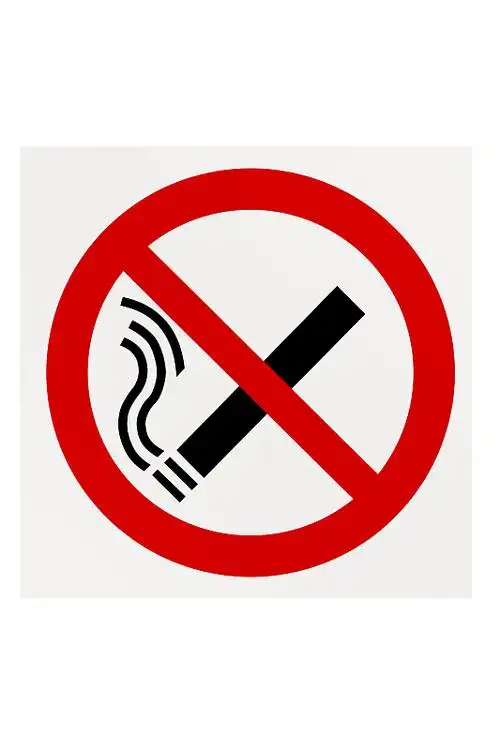Title: The Inhaled Aggressor: How Smoking Elevates the Risk of Bladder Neck Obstruction and Transurethral Resection
Introduction: Beyond the Lungs – Smoking’s Systemic Assault
The association between tobacco smoking and a plethora of health maladies, most notably lung cancer and cardiovascular disease, is indelibly etched into public consciousness. However, the detrimental effects of this habit extend far beyond the respiratory and circulatory systems, infiltrating nearly every organ. The urological system, particularly the bladder and its intricate outflow tract, is a significant yet often overlooked victim. A growing body of compelling clinical evidence now firmly establishes a direct and dose-dependent link between cigarette smoking and an increased incidence of bladder neck obstruction (BNO). This condition frequently necessitates surgical intervention, primarily transurethral resection of the prostate (TURP) or bladder neck incision (TNI), procedures that carry their own risks and burdens. This article delves into the pathophysiological mechanisms connecting smoking to BNO and elucidates why smokers face a substantially higher likelihood of requiring transurethral resection.
Understanding Bladder Neck Obstruction (BNO)
Bladder neck obstruction is a condition characterized by a failure of the bladder neck (the funnel-shaped outlet of the bladder that leads into the urethra) to open adequately during voiding. This results in obstructive voiding symptoms, which can be remarkably similar to those caused by an enlarged prostate (benign prostatic hyperplasia, BPH) in men, and can also occur in women. Symptoms include hesitancy, weak stream, straining to urinate, a sensation of incomplete emptying, and ultimately can lead to urinary retention, recurrent urinary tract infections, and bladder damage.
While BPH is a common cause in older men, BNO can also be functional or related to fibrosis and smooth muscle dysregulation at the bladder neck itself. It is this latter pathway where smoking appears to exert its most damaging influence.
The Pathophysiological Bridge: How Smoking Fuels Bladder Neck Dysfunction
The journey from a inhaled puff of smoke to a dysfunctional bladder neck is a complex process involving systemic inflammation, oxidative stress, and direct toxic damage. Several key mechanisms are at play:
-
Systemic Inflammation and Oxidative Stress: Cigarette smoke contains over 7,000 chemicals, including numerous potent oxidants and pro-inflammatory agents. These compounds are absorbed into the bloodstream, creating a state of chronic systemic inflammation and elevated oxidative stress. This inflammatory milieu promotes the formation and release of pro-fibrotic cytokines, such as transforming growth factor-beta (TGF-β). In the delicate tissues of the bladder neck, this cascade can lead to increased collagen deposition and tissue fibrosis, effectively stiffening and narrowing the passage. This fibrotic transformation is a primary contributor to anatomical BNO.
-
Disruption of Smooth Muscle Function: The proper opening of the bladder neck is a precisely coordinated relaxation of smooth muscles. Components of cigarette smoke, notably nicotine and carbon monoxide, interfere with autonomic nervous system regulation and local neuromuscular function. Nicotine can initially stimulate receptors but lead to long-term dysfunction, impairing the normal relaxation response. Furthermore, chronic ischemia (reduced blood flow) caused by smoking-induced vascular damage deprives these muscles of oxygen and nutrients, further compromising their contractility and elasticity.
-
Direct Carcinogenic and Irritant Effects on the Bladder: The bladder is a primary excretion site for many toxic metabolites from cigarette smoke, including potent carcinogens like aromatic amines (e.g., beta-naphthylamine). While this directly raises the risk of bladder cancer, these same irritant chemicals cause chronic low-grade inflammation (cystitis) within the bladder wall itself. This persistent irritation can lead to reactive tissue changes that extend to the bladder neck, contributing to hypertrophy and obstruction. Long-term irritation alters the bladder's cellular environment, making it more prone to dysfunctional remodeling.
-
Hormonal Alterations: Some research suggests that smoking can influence endocrine pathways, including altering estrogen metabolism and potentially affecting androgen levels. Given that the prostate and bladder neck tissues are hormonally sensitive, these shifts may indirectly influence cellular proliferation and tissue dynamics, potentially exacerbating obstructive pathologies.
The Clinical Evidence: Linking Smoking to Increased TURP Rates
Epidemiological studies and clinical analyses have consistently supported the theoretical pathophysiological links. Research findings typically show:
- Increased Incidence: Smokers and former smokers present with clinically significant lower urinary tract symptoms (LUTS) requiring surgical intervention at a higher rate than never-smokers.
- Dose-Response Relationship: The risk is not binary. Studies often demonstrate a clear gradient: the risk of requiring surgery like TURP increases with the number of pack-years (a measure calculated by multiplying the number of packs of cigarettes smoked per day by the number of years smoked). Heavy, long-term smokers face the greatest risk.
- Earlier Onset: Smoking may not only increase the risk but also accelerate the timeline of the disease, leading to the development of obstructive symptoms and the need for intervention at a younger age.
- Post-Surgical Outcomes: Some evidence indicates that smokers may have worse recovery outcomes post-TURP, including higher risks of complications like bleeding or infection, likely due to impaired tissue healing and microvascular damage from smoking.
Transurethral Resection: The Inevitable Intervention
For patients with severe BNO that is unresponsive to medical management (e.g., alpha-blockers to relax smooth muscle), transurethral resection becomes the standard of care. TURP involves the insertion of a resectoscope through the urethra to surgically remove obstructive tissue at the bladder neck and/or prostate. While effective in relieving obstruction, it is an invasive procedure with potential risks, including bleeding, infection, retrograde ejaculation, urethral stricture, and, in rare cases, incontinence.
The need for this surgery represents a significant decline in a patient's quality of life and a substantial cost to healthcare systems. Therefore, identifying and mitigating a major modifiable risk factor like smoking is of paramount importance.
Conclusion and Implications for Prevention
The connection between smoking and the increased need for transurethral resection due to bladder neck obstruction is a powerful example of urological damage inflicted by a voluntary habit. The pathway is clear: inhaled toxins lead to systemic inflammation, tissue fibrosis, smooth muscle dysfunction, and local irritation, which collectively remodel and obstruct the bladder neck.
This understanding shifts the perspective on smoking cessation from being solely a pulmonary or cardiac imperative to a crucial urological one. For urologists, taking a detailed smoking history is essential for risk stratification and patient education. For patients, particularly those experiencing early LUTS, quitting smoking is a potent therapeutic intervention. It may slow the progression of fibrosis, alleviate inflammatory burden, and potentially delay or even prevent the need for major surgery. Public health messaging must expand to highlight these less-known consequences, reinforcing the message that for every organ system, from the lungs to the bladder, every cigarette does damage. Cessation remains the most effective strategy to preserve bladder function and avoid the surgeon's scope.











